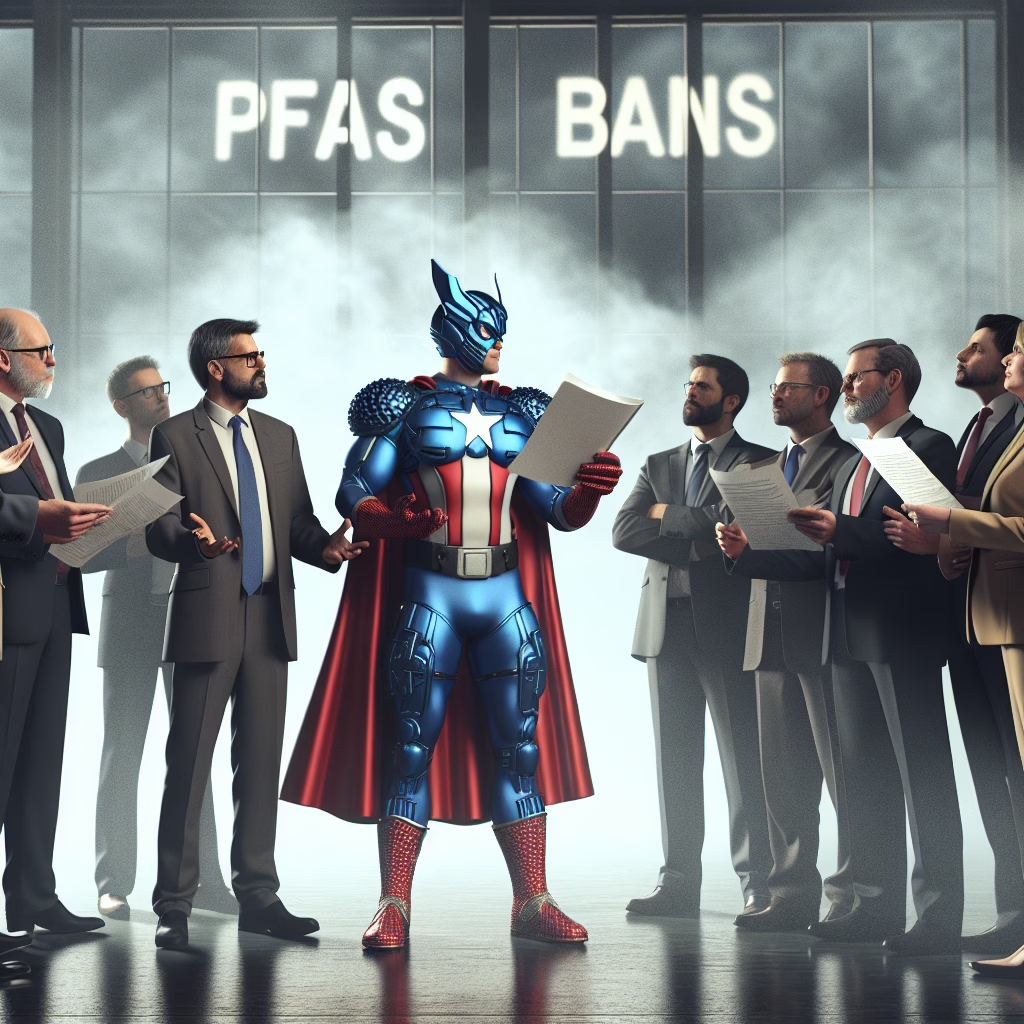Welcome to the wild world of PFAS, the infamous forever chemicals that just won’t quit! In 2025, states across the nation are taking a brave stand against these chemical compounds, and it’s shaping up to be quite the showdown. As we dive into the humorously chaotic landscape of PFAS bans, let’s unpack how industries are scrambling to maintain their grip on these elusive substances. From legislative battles to corporate pushback, this is an ongoing saga that pits public health and safety against the interests of powerful industries.
The Great PFAS Showdown: States vs. Industry
Imagine this: states, armed with legislation, ready to take on the titan of PFAS manufacturers. It’s like David versus Goliath, but instead of a slingshot, David wields a bill in Congress and a strong desire for cleaner water. The industry? Well, they’re not exactly going down without a fight. They’re flexing their lobbying muscles like a bodybuilder on a protein shake binge, eager to protect their profits!
In recent years, the push for PFAS bans has gained momentum, with various states realizing that these chemicals might not be the best addition to their water supply. Who would have thought that something called “forever chemicals” could lead to such temporary chaos? Yet here we are! Many state governments are collaborating with health organizations to raise awareness of the dangers posed by PFAS. It is not just emerging as a local issue but a national concern, inspiring other states to follow suit.
The Comical Resistance
As states ramp up their efforts to ban PFAS, the industry is rolling out a series of comically exaggerated responses. From claims that banning these chemicals will cause widespread economic collapse—cue the dramatic music—to suggesting that we might need to revert back to carrier pigeons for communication (because apparently, technology relies on PFAS?), the industry is pulling out all the stops. These reactions often border on the absurd, reflecting their desperation in the face of mounting public pressure.
But let’s look at this from another angle. The resistance from these companies provides us with some great entertainment! Their attempts to paint themselves as defenders of freedom—like some sort of superhero squad—are both laughable and eye-opening. Are they really worried about our freedom from toxic waste? Or just about losing profit margins? The struggle highlights a critical discourse surrounding environmental regulation and corporate responsibility.
The Real Cost of PFAS
The implications of continuing to use PFAS are no laughing matter. These chemicals have been linked to numerous health issues, including cancer and hormonal disruptions. It turns out that what might seem like harmless substances can lead to serious consequences for both health and the environment. With the FDA and EPA scrutinizing PFAS more closely than ever, the long-term effects of these chemicals are coming under fire.
States pushing for bans are highlighting these health risks in their campaigns. Their argument is straightforward: why risk public health for corporate profits? It’s a reasonable question, though one that seems lost on many industry players who prefer to focus on their bottom lines rather than our well-being. Advocates argue that regulators must prioritize public safety over industrial interests for the sake of future generations.
The Future Without PFAS?
If successful, these state bans could usher in an era where PFAS-free products become the norm. Imagine a world where your water doesn’t taste like it came from a chemistry lab! Companies are already scrambling to develop alternatives—some even jokingly refer to it as their “greenwashing” phase. Who knew environmental responsibility could be so trendy?
This shift could lead to innovations that benefit consumers while reducing environmental impact. It’s like turning lemons into lemonade—if only those lemons weren’t also infused with toxic chemicals! The future will likely favor sustainability, pushing companies to invest in research and development for safer chemical alternatives.
How Can We Help?
As consumers, we hold power in this battle against PFAS. By supporting brands that prioritize safety over profit, we can encourage companies to innovate responsibly. Plus, voting for policies that promote transparency regarding chemical usage can help pave the way toward healthier options. Joining local initiatives that raise awareness about PFAS and their effects adds a grassroots dimension to this fight.
Let’s remember: while corporations may try to spin this narrative into one of doom and gloom for their bottom line, our health is not up for negotiation. The more we demand change, the more likely we are to see it happen! Engaging with community discussions and participating in public forums can amplify our voices and drive necessary legislative changes.
The Punchline
So here we stand in 2025: states taking bold steps against PFAS, industries throwing tantrums worthy of a toddler who lost their favorite toy, and consumers caught in the middle trying to make informed choices. It’s a comedy of errors wrapped in serious undertones, but at least it gives us something to chuckle about while we sip our PFAS-free lemonade! The shifting dynamics of environmental governance and corporate accountability are critical to watch.
What do you think about the ongoing battle over PFAS? Are you team state or team industry? Let us know your thoughts in the comments below!
A special thanks to Wired for inspiring this article! For more on environmental topics, check out our article on the AI race and how policies affect the tech industry. You might also find our piece on cryptocurrency market fluctuations interesting!

